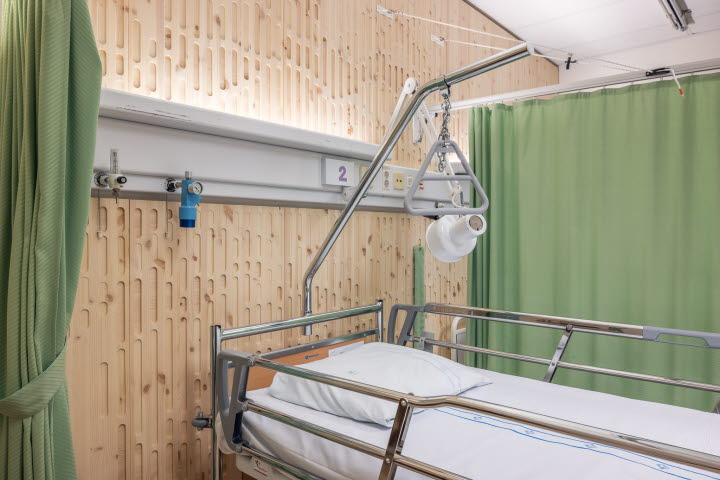Interdisciplinary research needed
The results and responses from the different measurements are interpreted by a number of nurses and medical experts in the hospital, who try to identify any differences between patients in the different rooms. So far, the number of patients − the statistical base − is too small to show any clear clinical results. At least 60 patients need to be included in the study before any conclusions can be drawn and Bror anticipates having verified data by the end of 2025.
Hopefully the results of the pilot project in Skellefteå will show the same clear link between wood and health that his Norwegian colleagues demonstrated in previous studies.
“This pilot project was prompted by the results of a similar study conducted at the orthopaedic department in Trondheim in 2015−2016. This indicated that patients in rooms with wood panelling on the walls had shorter stays than patients in rooms without wood panelling, but further multidisciplinary research is needed to verify the role of wood.”
At a conference in 2017, Bror Sundqvist got in touch with Anders Qvale Nyrud, who conducted the Norwegian study, and managed to set up a Swedish version a few years later, in collaboration with Swedish Wood and others.
Beginning of a long knowledge journey
The project has had anything but an easy journey, interrupted by both a pandemic and hospital renovations, but Bror is determined to see the research through to the end − if only to use the results of the pilot project as a basis for future, more comprehensive studies in this area.
Exciting research is going on around the world and Bror hopes to be able to carry out larger studies in the future, in more environments featuring wood, preferably in partnership with other countries and researchers.
“Getting stable funding isn’t easy, but this is a very interesting area of research, with the potential to bring about major societal benefits. We have a lot to learn and it is high time we in Sweden contributed our own insights on how wood can promote better health and faster recovery. Personally, I really believe it does, but it would be great if we could conclusively prove it,” concludes Bror.


